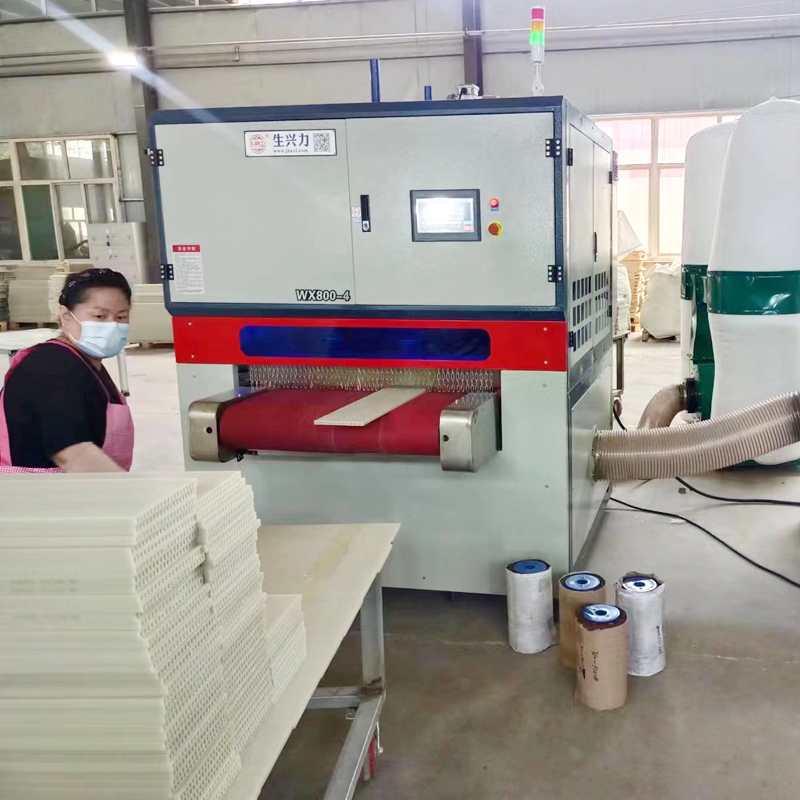

One: abrasive belt durability
Durability is how long a tool can be used effectively. For abrasive belt grinding, the durability of abrasive belt refers to the time of grinding under certain grinding conditions (such as material removal rate, grinding force, grinding temperature, etc.), usually expressed in seconds (or hours), and in practical applications, it is also useful to express the cumulative grinding amount, that is, the total amount of materials (mm3) or the number of workpiece accumulated by the entire abrasive belt. Although this method is not strict enough, it is simple and convenient to apply, and can roughly reflect the actual situation of the durability of the sand belt.
The durability of the sanding belt is different from the durability of the grinding wheel, the latter refers to the processing time between two dressing, and the former usually cannot be dressed, and a sanding belt is used until it can no longer be used. Therefore, the durability of the sand belt is much longer than the grinding wheel from this point of view, generally in 4 to 10h. Its durability, heavy load grinding is shorter, light load grinding is longer. Z poor may only use 10 to 30,min, Z good sand belt can be used for a few days, depending on the specific processing conditions.
Two: The identification principle of replacing the sand belt
Judging whether the abrasive belt polishing machine has expired is mainly based on its wear condition. When it enters the end of wear, the service life of the abrasive belt will end, indicating that a new abrasive belt needs to be replaced. Whether the wear enters the final stage is mainly reflected by the following parameters:
1) The material removal rate or grinding efficiency, when it drops to the specified resin, is considered to have expired for this grinding (given grinding amount and other conditions).
2) Grinding force. When the grinding force exceeds a specified value in the grinding process, it can also be used as a sign that the service life of the sand belt has expired.
3) Grinding temperature. During the grinding process, if the grinding temperature is better than the specified standard, it can also be considered that the service life of the sand belt is expired. In practical application, the most direct way to determine whether the temperature exceeds the standard is to observe whether the surface of the workpiece is burned.
The above discrimination is only from one aspect of grinding performance. In actual production, production costs are also a very important factor, because premature replacement of sand belts means increased tool consumption, too late, grinding efficiency is too low, man-hour costs increase, and costs increase. Therefore, to determine whether the sand belt should be replaced, the two must be combined, and the goal is to minimize the cost of a single piece. Statistics show that: by analyzing the average cost of a single product, when the belt grinding is carried out at a higher productivity, although the belt life will be shorter, it is more economical than using a lower efficiency in order to obtain a longer service life of each belt. For the abrasive belt with high initial grinding efficiency, its economic life may only be 1/3 of its life when grinding with low efficiency. Of course, replacing the dulls in turn and using them for finer processing will also make the processing more economical, but this is another matter.
An easy way to decide when to replace the sand belt for a lower cost per piece is to draw a schematic diagram as shown in the figure, where the cost curve is obtained from the test results. The productivity curve shows the number of parts processed at different times.
Assume that the cost of the sanding belt is 2 yuan, and the time for stopping the replacement of the sanding belt is 5 minutes, and the labor cost during this time should be included in the processing cost (calculated at the labor price of 6 yuan per hour).
Therefore, in this example, the initial value is 2.5 yuan. With the increase of grinding time, the labor cost is also included in the processing cost accordingly. For example, after 1h, the processing cost should be 8.5 yuan.
Extend the cost curve (line) to the left so that it intersects the cost baseline at point A. To find out the economic processing conditions and the belt replacement time, simply tangent the productivity curve from point A. In this case, 45 minutes corresponding to the tangent point is the best replacement time. Replacing the belt at any time before or after this point will drive up costs.
Another way to determine the timing of belt replacement is to plot the increase in cost over time and the decrease in material removal rate over time. The time corresponding to the intersection point of the two curves is the time of sand belt replacement.
